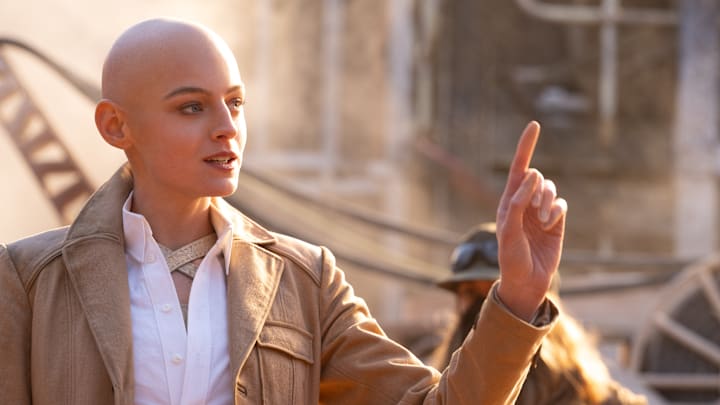Avengers: Age of Ultron, Captain America: Civil War, Thor: Ragnarok, Spider-Man: Far From Home, Doctor Strange in the Multiverse of Madness, and now Deadpool & Wolverine. These are some of the fantastic Marvel Cinematic Universe productions with exquisite visual effects, that have not been nominated for Best Visual Effects Oscars in their respective years.
Even before the Academy Awards ceremony occurs on March 2, any hopes that the MCU could snatch up its first Oscar in this category were crushed when Deadpool & Wolverine failed to receive a Visual Effects nod. The nominations went to Alien: Romulus, Better Man, Dune 2, Kingdom of the Planet of the Apes, and Wicked. Although Marvel Studios works with the best technical artists in the business, there is always top-notch competition every year, making their winless streak slightly justifiable. But this year does not particularly have one of the stronger lists of candidates.
Better Man is derivative of the Apes franchise in which it is competing against. The central CGI character works well, but it is not “better” than Andy Serkis’ contribution to the artform in Rise of the Planet of the Apes, over a decade ago. The premise of Robbie Williams as an ape is inventive, yet the energetic biographical tale is actually what makes the narrative pop, even more than the superstar singer irreverently being depicted as a CGI monkey.
Then there is the uneven visual style in Wicked, which ranges from surprisingly ordinary to overly glossy. The anthropomorphic animals, as well as the flying sequences, suit the world that Jon Chu constructs, however they pale in comparison to the Void’s wasteland set pieces in Deadpool & Wolverine.
Fans of the series may recall that Deadpool and Deadpool 2 also lacked Oscar recognition, but with Deadpool & Wolverine’s grand entrance into the Marvel Cinematic Universe, all aspects of the sub-franchise were raised to a higher level. The story is more ambitious, all character interactions are impressively juggled, and, most of all, the visuals are much more elaborate and technically crisp.
The third Deadpool deserves to be acknowledged just from the battle in front of Giant-Man’s skull alone. And even the more finely detailed visuals were employed with pristine results, such as Cassandra Nova manipulating her hand through her adversary’s heads. Something that could have looked messy ended up playing out in unnervingly realistic and absolutely incredible fashion.
Deadpool & Wolverine’s action sequences have just as much visual flair as the musical numbers in Wicked and the mutant abilities on display look even more remarkable than the xenomorph’s in Alien: Romulus. Another solid entry in the Alien catalog, voters definitely gave high marks to Romulus’ expert use of puppetry and animatronics, but the vast combination of effects that pull from the power sets of the X-Men, Avengers, and Fantastic Four, all operating flawlessly, still should have given Deadpool 3 an edge over Romulus, Better Man, or Wicked.
If it were nominated, Deadpool & Wolverine still would have to contend with Kingdom of the Planet of the Apes and Dune 2. The Apes franchise is now four for four when it comes to Visual Effects Oscar nods, but the first three came up empty, just like the MCU. This could be the Apes franchise's year, but don’t forget that the first Dune won for this category three years ago. It beat out Shang-Chi and the Legend of the Ten Rings and Spider-Man: No Way Home. It is hard to argue against Denis Villeneuve’s sci-fi creations, but it would have been nice to see Spidey take the prize.
Counting Deadpool & Wolverine, the MCU now has 34 movies on its slate, and 14 of them were nominated for Best Visual Effects Academy Awards. Doctor Strange seemed destined for victory, yet Jon Favreau’s team invented new visual design techniques for The Jungle Book. Perhaps the loss that hurt the most was Avengers: Infinity War, when it was defeated by First Man. The astronaut biopic was finely crafted, but the scenes set in space are reminiscent of dozens of movies that came before, without adding any special effects of particular note.
So after 34 movies in 17 years, the Marvel Cinematic Universe will go another awards season without winning a Visual Effects Oscar. Unlike 2024’s singular Deadpool & Wolverine release, the MCU will have three opportunities to earn some recognition for 2025, with Captain America: Brave New World, Thunderbolts, and The Fantastic Four: First Steps.
